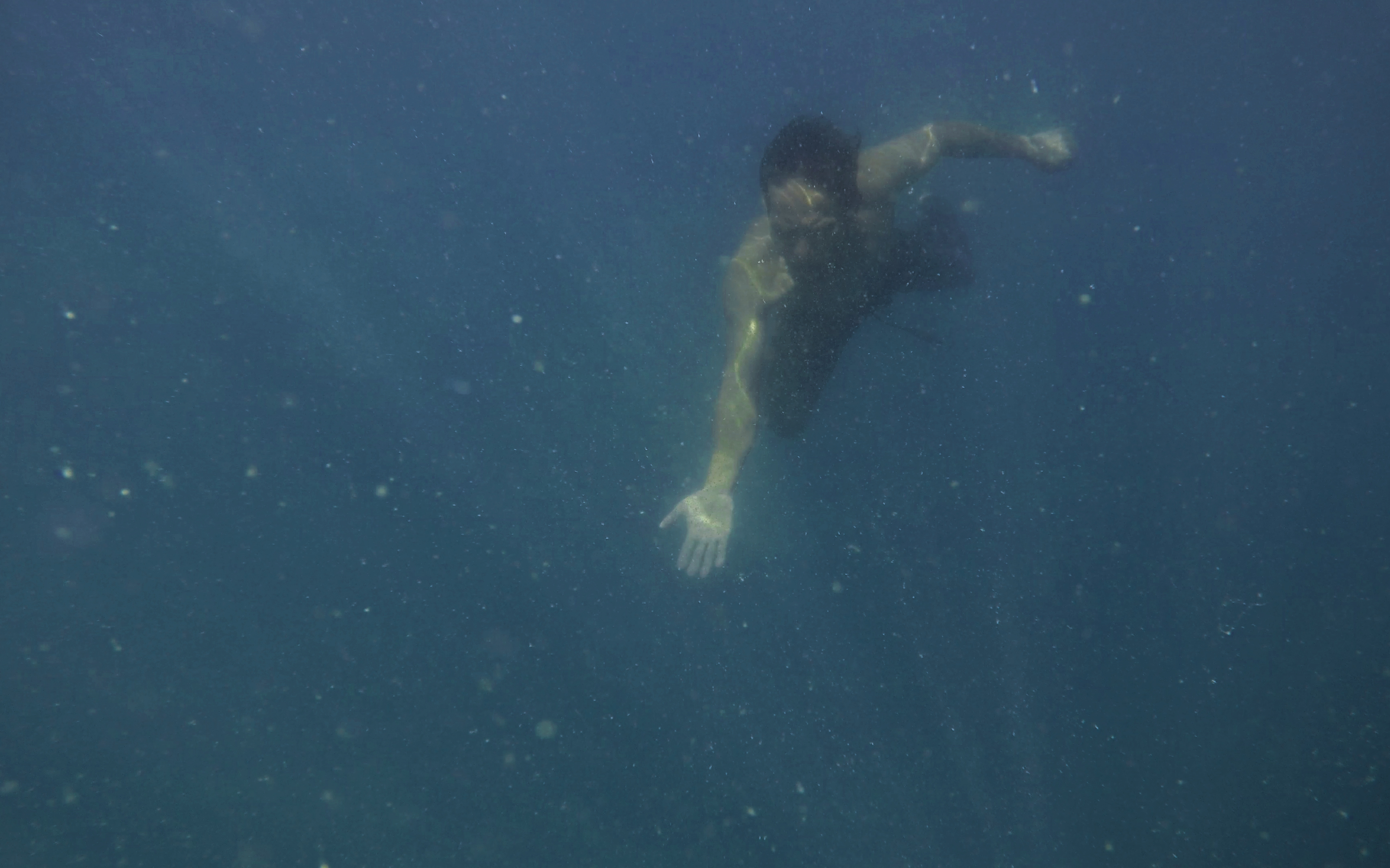Fish Listeners of Setiu Lagoons, directed by Dain Iskandar Said (Malaysia: Apparat, 2018).
The Thai government’s plans to transform the Chana District into a “Southern Economic Corridor,” industrial city, and deep-sea port would devastate local fishing communities’ livelihoods and ways of life. These communities restored depleted coastal ecologies some thirty years ago by constructing artificial reefs. Their protests have been quelled by military force.
Sounds Too Many is a lecture-performance by Francesca Thyssen-Bornemisza. This primarily acoustic presentation creates an immersive experience that calls into question the unlimited and unregulated sonic pollution that the Anthropocene era has imposed on our oceans and the disruption that this causes to all natural phenomena. It is a call for a quieter ocean. In collaboration with the Acoustic Ecology Laboratory at Scripps Institution of Oceanography, the award-winning NRDC documentary Sonic Sea, TBA21–Academy expeditions, the sound artist Jana Winderen, and other contributors, never-before-heard sounds had been spatialized by sound engineers from Ears Up Sound Design Studio in Burbank, California, in partnership with Meyer Sound Laboratories, to create this immersive soundscape. Visualizations by Territorial Agency are tightly synchronized with the soundscapes to provide visceral insights into the scale and mechanics of the ecological threat that is sound pollution in the ocean. For more information, see ➝.
Exceptions trouble such species limitations, as Jana Winderen noted in a conversation with the author on July 24, 2020. Certain “sea gypsy” groups, such as the Moken, have evolved underwater sight, while Samau-Bajau populations’ larger spleens permit prolonged submersion when free-diving.
Vocalizing underwater is possible, but requires the skilled manipulation of air pressure shifts, bubble noise, and bone conduction.
Stefan Helmreich, “Listening Against Soundscapes,” Anthropology News, December 2010, 10, ➝.
Philip Steinberg, “Of Other Seas: Metaphors and Materialities in Maritime Regions,” Atlantic Studies 10 (2013): 156.
I cite Lendl Barcelos’s elaboration of the “anthroposonic.” See Lendl Barcelos, “The Nuclear Sonic: Listening to Millenial Matter,” in Aesthetics After Finitude, eds. Amy Ireland, Baylee Brits, and Prudence Gibson (Sydney: Re.press, 2016), 72.
Fish Listeners of Setiu Lagoons, Said.
Winderen notes the need for multidisciplinary efforts to map the spawning areas of various species, etc., so that sonar-navigated shipping traffic can avoid them.
As in Listening to the Deep Ocean Environment (LIDO), as well as in planetary-scale ocean surveillance schemes, such as SOSUS (Sound Surveillance System), a still-operational Cold War submarine detection initiative.
Jeremy Page, “Underwater Drones Join Microphones to Listen for Chinese Nuclear Submarines,” Wall Street Journal, October 14, 2014, ➝.
Lino Camprubi and Alexandra Hui, “Testing the Underwater Ear: Hearing, Standardizing, and Classifying Marine Sounds during the Cold War,” conference paper, Testing Hearing: Science, Art, Industry, Max Planck Institute for the History of Science, Germany, December 4–5, 2015.
Susan Schuppli cites geographer Andrew Barry’s notion of “informational enrichment” in her book. See Susan Schuppli, Material Witness: Media, Forensics, Evidence (Cambridge: MIT Press, 2020), 7; Camprubi and Hui, “Testing the Underwater Ear.”
Steve Goodman, Sonic Warfare: Sound, Affect, and the Ecology of Fear (Cambridge: MIT Press, 2010), 17.
Ibid., 35–37.
Global shipping traffic has increased some three hundred percent since 1992. Laura Cole, “Sound Argument,” Geographical, October 15, 2015.
Michel André in conversation with the author on July 24, 2020.
Krishna Ramanujan, “Acoustic maps of ocean noise reveal how shipping traffic affects whales,” Cornell Chronicle, February 22, 2010, ➝.
Daniel Stolte, “Blinded by the Noise,” Science, February 23, 2010, ➝.
The Ocean Portal Team, “Ocean Acidification,” Smithsonian, 2018, ➝.
Katherine Harmon, “Could Ocean Acidification Deafen Dolphins?” Scientific American, December 20, 2009, ➝.
Geochemist Tatiana Ilyina frames this as the “less anticipated consequence of ocean acidification.” Ibid.
Edward A. Codling, Adam J. Hill, Julius Percy, and Stephen D. Simpson, “Habitat quality affects sound production and likely distance of detection of coral reefs,” Marine Ecology Progress Series 516 (2014): 35–47.
Michel Callon, “Some Elements of a Sociology of Translation: Domestication of the Scallops and the Fishermen at St Brieuc’s Bay,” in Power, Action and Belief: A New Sociology of Knowledge? ed. John Law (London: Routledge, 1986), 11.
Elizabeth Kolbert, “Unnatural Selection,” The New Yorker, April 18, 2016, 22–26.
See “Why are Coral Reefs Important?” in: “Basic Information about Coral Reefs,” Environmental Protection Agency, ➝.
A solidarity economy populated by what Donna Haraway would call “compound” figures. Stefan Helmreich, Sounding the Limits of Life: Essays in the Anthropology of Biology and Beyond (Princeton: Princeton University Press, 2016), 49–54.
“Silencing of the Reefs” was commissioned by TBA21–Academy and research was conducted on Dardanella.
Degraded reef environments sustain correspondingly less vocal activity among resident fishes, emerging “acoustic sample” studies have shown. Certain recent studies trial “playing back” biological sounds in degraded reefs to test for improved larval settlement rates and other markers of reef replenishment.
“Jana Winderen, Silencing of the Reefs, 2011,” TBA21, ➝.
Oceans in Transformation is a collaboration between TBA21–Academy and e-flux Architecture within the context of the eponymous exhibition at Ocean Space in Venice by Territorial Agency and its manifestation on Ocean Archive.
